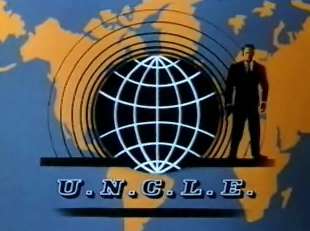
The Man from U.N.C.L.E. is an American spy fiction television series produced by Metro-Goldwyn-Mayer Television and first broadcast on NBC. The series follows secret agents Napoleon Solo, played by Robert Vaughn, and Illya Kuryakin, played by David McCallum, who work for a secret international counterespionage and law-enforcement agency called U.N.C.L.E.. The series premiered on September 22, 1964, and completed its run on January 15, 1968. The program was part of the spy-fiction craze on television, and by 1966 there were nearly a dozen imitators. Several episodes were successfully released to theaters as B movies or double features. There was also a spin-off series, The Girl from U.N.C.L.E., a series of novels and comic books, and merchandising.
Knight Rider is an American action crime drama television series created and produced by Glen A. Larson. The series was originally broadcast on NBC from September 26, 1982, to April 4, 1986. The show stars David Hasselhoff as Michael Knight, a sleek and modern crime fighter assisted by KITT, an advanced, artificially intelligent, self-aware, and nearly indestructible car. This was the last series Larson devised at Universal Television before he moved to 20th Century Fox Television.

Courage the Cowardly Dog is an American animated comedy horror television series created by John R. Dilworth for Cartoon Network. It was produced by Dilworth's animation studio, Stretch Films. The eponymous character is a dog who lives with an elderly couple in a farmhouse in the middle of Nowhere, a fictional town in Kansas. In each episode, the trio is thrown into bizarre, frequently disturbing, and often paranormal or supernatural adventures. The series is known for its dark, surreal humor and atmosphere.
Jackie Chan Adventures is an American animated television series developed by John Rogers, Duane Capizzi and Jeff Kline, and produced by Sony Pictures Television. The cartoon series premiered on September 9, 2000, and ran for five seasons until its conclusion on July 8, 2005. The series focuses on a fictionalized version of Hong Kong action film star Jackie Chan, who operates in life as an archaeologist and special agent, combatting threats that are mainly magical and supernatural with the aid of his family and close friends.

It Takes a Thief is an American action-adventure television series that aired on ABC for three seasons between 1968 and 1970. It stars Robert Wagner in his television debut as sophisticated thief Alexander Mundy, who works for the U.S. government in return for his release from prison. For most of the series, Malachi Throne played Noah Bain, Mundy's boss.
M.A.N.T.I.S. is an American superhero television series that aired for one season on the Fox Network between August 26, 1994, and March 3, 1995, with its final two episodes airing on Syfy on September 7 and 14, 1997.

Diagnosis: Murder is an American comedy-mystery-medical crime drama television series starring Dick Van Dyke as Dr. Mark Sloan, a medical doctor who solves crimes with the help of his son Steve, a homicide detective played by Van Dyke's real-life son Barry. The series began as a spin-off of Jake and the Fatman, became a series of three television films, and then a weekly television series that premiered on CBS on October 29, 1993. Joyce Burditt, who created the show, wrote the Jake and the Fatman episode.
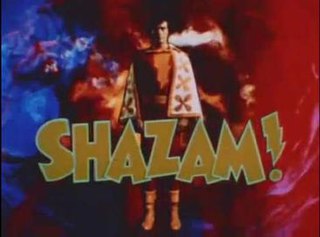
Shazam! is an American superhero television series that was produced for Saturday Mornings by Filmation, based on the superhero Captain Marvel, now known as Shazam, of Fawcett Comics' comic book series Whiz Comics. The program starred Michael Gray as Billy Batson, a teenage boy who can transform into the superhero Captain Marvel, originally played by Jackson Bostwick and later by John Davey, by speaking the magic word "Shazam!" With his guardian "Mentor", Billy travels the country in a 1973 Dodge Open Road motorhome, looking for injustices to resolve.
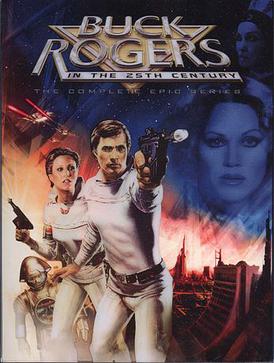
Buck Rogers in the 25th Century is an American science fiction adventure television series produced by Universal Studios. The series ran for two seasons between September 1979 and April 1981 on NBC, and the feature-length pilot episode for the series was released as a theatrical film before the series aired. The film and series were developed by Glen A. Larson and Leslie Stevens, based on the character Buck Rogers created in 1928 by Philip Francis Nowlan that had previously been featured in comic strips, novellas, a serial film, and on television and radio.

Harry O, sometimes spelled Harry-O, is an American private detective series that aired for two seasons on ABC from 1974 to 1976. The series starred David Janssen, and Jerry Thorpe was executive producer. Harry O followed the broadcast of two pilot films: firstly Such Dust as Dreams Are Made On and secondly Smile Jenny, You're Dead, both starring Janssen.
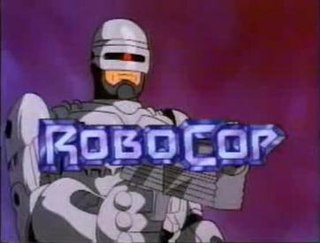
RoboCop is a 1988 superhero animated series based on the 1987 movie RoboCop. The cartoon aired as part of the Marvel Action Universe programming block. The series was animated by AKOM Productions.

Sanctuary is a Canadian science fantasy television series, created by Damian Kindler. The show aired on Syfy between 2008 and 2011, for four seasons and a total of 59 episodes.

Zorro is an American Western superhero television series featuring Duncan Regehr as the character of Zorro. Regehr portrayed the fearless Spanish hero and fencer on The Family Channel from 1990 to 1993. The series was shot entirely in Madrid, Spain and produced by New World Television (U.S.), The Family Channel (U.S.), Ellipse Programme of Canal Plus (France), Beta TV (Germany), and RAI (Italy). 88 episodes of the series were produced, Raymond Austin directed 55 episodes and produced 37. There were 10 more episodes made than the first Zorro television series, which was produced by Disney in the late 1950s.
Lie to Me is an American crime drama television series. It originally ran on the Fox network from January 21, 2009, to January 31, 2011. In the show, Dr. Cal Lightman and his colleagues in The Lightman Group accept assignments from third parties, and assist in investigations, reaching the truth through applied psychology: interpreting microexpressions, through the Facial Action Coding System, and body language. In May 2009, the show was renewed for a second season consisting of 13 episodes; season two premiered on September 28, 2009. On November 24, 2009, Fox ordered an extra nine episodes for season two, bringing the season order to 22 episodes.
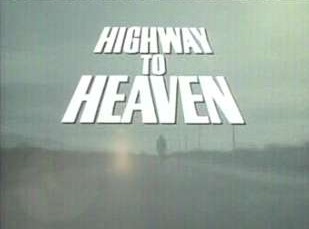
Highway to Heaven is an American fantasy drama television series that ran on NBC from September 19, 1984, to August 4, 1989. The series starred its creator and co-director Michael Landon as Jonathan Smith, an angel sent to Earth in order to help people in need. Victor French, Landon's co-star from his previous television series, Little House on the Prairie, co-starred as Mark Gordon, a retired policeman who travels with and helps Smith with the tasks or "assignments" to which he is referred. The series was created by Landon, who was the executive producer and also directed most of the show's episodes. French directed many of the remaining episodes. It was Landon's third and final TV series and his only one set in the present day, unlike Little House on the Prairie, and Landon's first TV series, Bonanza, both of which were Westerns. It was the final screen appearance for French, who died two months before the final episode aired, aged 54 years old; Landon went on to appear in two films, one of which was a pilot for a new series, prior to his own death at 54 in 1991.

The first season of the American crime drama series The Sopranos aired on HBO from January 10 to April 4, 1999. The first season was released on DVD in North America on December 12, 2000, and on Blu-ray on November 24, 2009.
Works of popular culture influenced by H. G. Wells' 1897 novel The Invisible Man include:













